Chameleon People - [2]
Now, as I had on my thirty-seventh birthday three days earlier, I reflected on how immeasurably my life had improved since that great drama in the summer of 1970. I was an exceptionally lucky man. Thanks to Miriam, my private life felt more settled and yet more exciting than it had ever felt before. And at work, it had been a quiet year with only routine work. My status as hero in both the police force and with the general public, arising from several widely reported murder cases in the past four years, remained intact, and I had had no reason to defend it in the face of new challenges thus far in 1972.
In brief, life felt good and secure in every way, and I was almost without a care in the world.
As I turned away from the window at a quarter to seven, ready to sit down on the sofa with my book for the week and the day’s news on the radio, I still had no idea as to just how eventful the evening would turn out to be. Nor did I know how swiftly and dramatically my life would change over the following seven days.
II
At eight o’clock, I put down Johan Borgen’s novel, The Red Mist, and turned my attention to the news. The mass demonstration against EEC membership was, as expected, the first item. At ten past nine, however, the programme was interrupted by a news flash to say that the well-known Centre Party politician, landlord and businessman, Per Johan Fredriksen, had been stabbed on a street by Majorstuen station barely half an hour before. The presumed attacker had been seen running away from the scene of the crime and the victim’s condition was as yet unknown. There was little else to be said at this point, but the newsreader promised there would be more information in later bulletins.
As I listened, I got up and wandered over to the living-room window, my eyes focusing on the only movement on the street below.
The movement turned into a red bicycle of the simplest and cheapest type, previously sold by the Coop. It was approaching at alarming speed, given that the bike looked rather rickety and the cyclist rather small. At first I thought it was a woman, but then realized that it was a thin, dark-haired boy of around fifteen. He was definitely neither strong nor big for his age, and he was clearly out of puff. However, he hung doggedly on to the handlebars and pedalled furiously up the last part of the slope.
There were no teenagers living in the building that I knew of and I was sure that I had never seen the cyclist before. So I stayed where I was and watched him slow down and then lurch, rather than leap, from the bike only a few metres from the apartments. The bicycle lay abandoned in the middle of the path, as the cyclist ran on towards the door.
Even though my mind was not working at full capacity, I did notice that the young cyclist had a terrible limp in his right leg as he struggled with the final stretch, and that he was exhausted and disoriented. I wondered for a moment which of the residents this apparently desperate and rather dubious character might know, and was very thankful that it was not me.
Then the doorbell rang.
It echoed around the flat – then rang three more times with only a few seconds’ interval in between.
I went to the door, but stopped and hesitated. The idea of pretending I was not there was very tempting indeed.
While I dithered, the bell rung for a fourth and fifth time. And the fifth ring sounded to my ear like a long cry of anguish.
Suddenly this brought to mind the very unpleasant incident on the Lijord Line two years before, when I had seen the carriage doors close in front of a terrified young woman, who was then found dead on the tracks later that evening. It was an awful experience that I did not wish to repeat, so I swiftly picked up the intercom and asked who it was.
‘Let me in! They’re after me! I have to talk to you before they get me!’
His voice was ragged, gasping and shrill with fear, but did not mask the fact that the boy had a speech impediment.
I hesitated again for a fraction of a second. Then I looked out of the window and saw the car.
It was a big car with no lights, and it sped up the hill through the dark in an almost aggressive manner towards the abandoned bike.
The sight of the car made me spontaneously press the door-opener, and over the intercom system I heard my unexpected guest tumbling in downstairs.
Seconds later, I had opened the door to my flat. The boy on the red bicycle was by then clattering up the stairs towards me. He tripped on the last step and ended up prostrate and panting on the landing. I as good as dragged him into the flat and slammed the door shut.
It never occurred to me that my uninvited visitor might be dangerous. The boy was empty-handed, thin, just over five foot, and on top of that, completely done in by his frantic flight. He lay on the floor by my doormat for a few seconds, gasping for breath.
‘Who is after you?’ I asked.
Just then there was another ring on the bell.
I looked down at him and hastily repeated my question. His answer was a shock.
‘The police.’
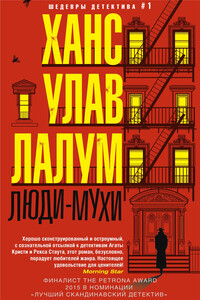
Убит бывший лидер норвежского Сопротивления и бывший член кабинета министров Харальд Олесен. Его тело обнаружено в запертой квартире, следов взлома нет, орудие убийства отсутствует. На звук выстрела к двери Олесена сбежались все соседи, но никого не увидели. Инспектор уголовного розыска Колбьёрн Кристиансен считает, что убийство, скорее всего, совершил кто-то из них. Более того, он полагает, что их показания лживы.
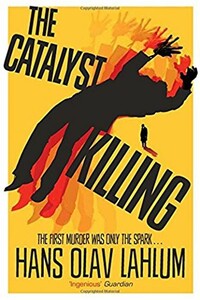
The third mystery in the hugely compelling, bestselling international crime series from Norway's answer to Agatha Christie, Hans Olav Lahlum, The Catalyst Killing will have you guessing to the final clue. The first murder was only the spark… 1970: Inspector Kolbjorn Kristiansen, known as K2, witnesses a young woman desperately trying to board a train only to have the doors close before her face. The next time he sees her, she is dead… As K2 investigates, with the help of his precocious young assistant Patricia, he discovers that the story behind Marie Morgenstierne's murder really began two years ago, when a group of politically active young people set out on a walking tour in the mountains.
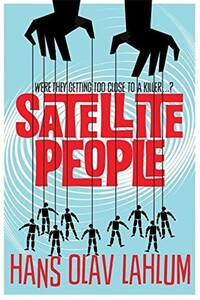
A gripping, evocative, and ingenious mystery which pays homage to Agatha Christie, Satellite People is the second Norwegian mystery in Hans Olav Lahlum's series. Oslo, 1969: When a wealthy man collapses and dies during a dinner party, Norwegian Police Inspector Kolbjorn Kristiansen, known as K2, is left shaken. For the victim, Magdalon Schelderup, a multimillionaire businessman and former resistance fighter, had contacted him only the day before, fearing for his life. It soon becomes clear that every one of Schelderup's 10 dinner guests is a suspect in the case.
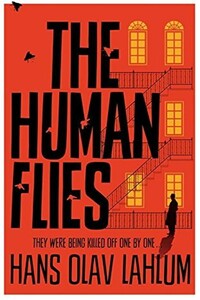
Oslo, 1968: ambitious young detective Inspector Kolbjorn Kristiansen is called to an apartment block, where a man has been found murdered. The victim, Harald Olesen, was a legendary hero of the Resistance during the Nazi occupation, and at first it is difficult to imagine who could have wanted him dead. But as Detective Inspector Kolbjorn Kristiansen (known as K2) begins to investigate, it seems clear that the murderer could only be one of Olesen's fellow tenants in the building. Soon, with the help of Patricia – a brilliant young woman confined to a wheelchair following a terrible accident – K2 will begin to untangle the web of lies surrounding Olesen's neighbors; each of whom, it seems, had their own reasons for wanting Olesen dead.
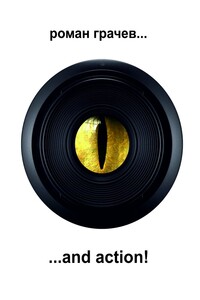
Молодой и дерзкий журналист Виктор Вавилов, главный редактор глянцевого журнала, находится на грани нервного срыва. Кредитор требует срочного возврата долга, угрожая физической расправой; любимая жена, кажется, собирается подать на развод; подчиненные на работе явно не готовы выполнять поставленные задачи. Все меняется, когда в руки Виктора попадает видеокамера его друга, телевизионного оператора. Нужно просто нажать кнопку «rec» — и все будет… хорошо?
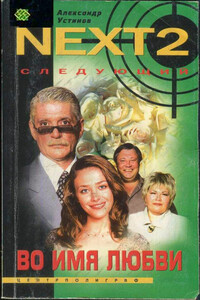
Книга написана по сценарию известного российского драматурга А.В. Тимма.Шайка Ангелины Виннер продолжает борьбу. Им удается похитить Ольгу Кирсанову, жену убитого хозяина «Империи». Сын Ольги Ваня ради спасения матери отказывается от своих прав на фирму. Враждебный лагерь празднует победу, но… преждевременно! В руках у Лавра козырная карта — завещание, и, обнародовав его, он ломает планы своих врагов. Остановятся ли бандиты, или кто-то снова окажется их следующей жертвой?
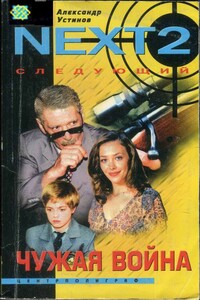
Книга написана по сценарию известного российского драматурга А.В. Тимма.Франц Хартман и Ангелина Виннер, подстроившие автокатастрофу, в которой погиб хозяин «Империи» Владимир Кирсанов, намерены идти до конца. Теперь они замышляют убийство его жены Ольги и несовершеннолетнего сына Вани, наследника «трона». Волею случая Лавру суждено сыграть роль доброго ангела в судьбе женщины и ребенка.
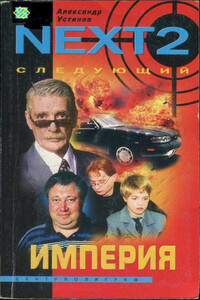
Книга написана по сценарию известного российского драматурга А. В. Тимма.Конкуренты хозяина «Империи» Владимира Кирсанова подстроили автокатастрофу. Он гибнет, а его жена Ольга чудом остается жива. Пока она лежит в коме, адвокат Ангелина Виннер и бывший компаньон погибшего Андрей Семирядин пытаются завладеть наследством Кирсанова. Но его сын Ваня прерывает учебу в Лондоне и с помощью «сладкой парочки», музыкального Санчо и неувядающей Клавдии, возвращается на Родину, чтобы продолжить дело отца.

Обстоятельный и дотошный инспектор амстердамской полиции Ван дер Вальк расследует странное убийство домохозяйки («Ать-два!»). Героям известного автора детективов предстоят жестокие испытания, прежде чем справедливость восторжествует.
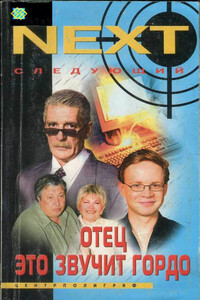
Книга написана по сценарию известного российского драматурга А.В. Тимма. На страницах романа вы встретитесь со старыми знакомыми, полюбившимися вам по сериалу «NEXT», — благородным и великодушным Лавром, его сыном Федором, добродушным весельчаком Санчо и решительной Клавдией. Увлекательное повествование вводит в мир героев, полный настоящих рыцарских подвигов и романтических приключений.